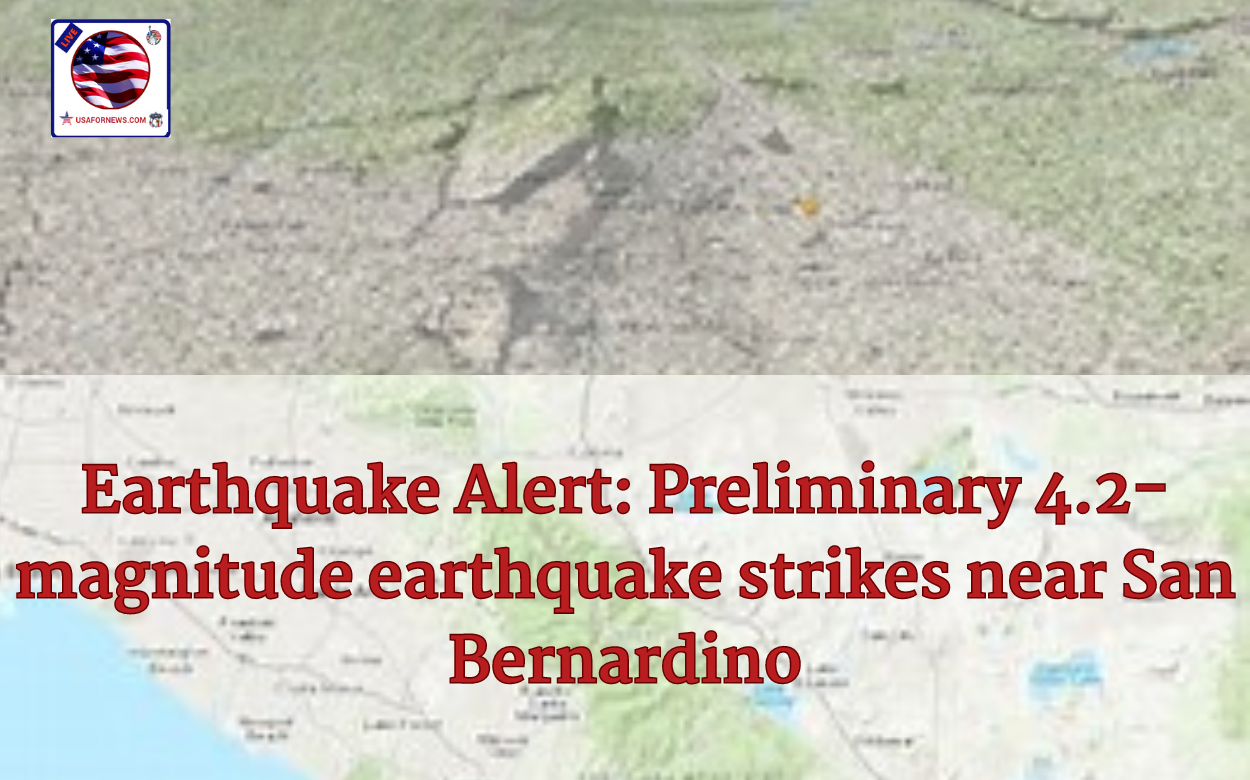Preliminary 4.2-magnitude earthquake | USA Today News :- In the early hours of [01/25/2024], residents in the vicinity of San Bernardino, California, were startled by the unsettling tremors of a preliminary 4.2-magnitude earthquake. The seismic event, reported by USA Today News, serves as a stark reminder of the unpredictable nature of our planet. In this blog post, we will delve into the details of the earthquake, its potential implications, and the importance of earthquake preparedness.

Preliminary 4.2-magnitude earthquake The Earthquake Event:
According to seismic monitoring agencies, the earthquake originated near San Bernardino with a preliminary magnitude of 4.2. While initial reports indicate minimal damage and no casualties, it underscores the vulnerability of regions located near fault lines. The United States Geological Survey (USGS) and other seismic monitoring organizations are closely monitoring the situation to provide real-time updates and ensure the safety of residents.
Preliminary 4.2-magnitude earthquake Understanding Earthquakes:
Earthquakes are natural phenomena caused by the movement of tectonic plates beneath the Earth’s surface. The San Andreas Fault, a well-known fault line in California, is a major source of seismic activity in the region. These geological movements release energy in the form of seismic waves, resulting in the ground shaking. While most earthquakes are minor and go unnoticed, larger events can lead to significant damage to infrastructure and pose risks to human safety.

Emergency Preparedness:
The occurrence of earthquakes underscores the importance of being prepared for such natural disasters. Residents in earthquake-prone areas, like San Bernardino, should have an emergency preparedness plan in place. This includes having emergency supplies such as water, non-perishable food, first aid kits, and a communication plan for family members. Local authorities and emergency services play a crucial role in disseminating information and coordinating response efforts during such events.

Seismic Monitoring and Early Warning Systems:
Advancements in technology have allowed for the development of seismic monitoring systems and early warning mechanisms. These systems can provide crucial seconds to minutes of advance notice before the shaking from an earthquake reaches a specific location. While early warning systems are not foolproof, they offer valuable time for people to take cover and for automated systems to initiate safety protocols in critical infrastructure.

Community Resilience:
In addition to individual preparedness, fostering community resilience is essential in mitigating the impact of earthquakes. Community engagement, education, and drills contribute to increased awareness and readiness. Local governments and organizations should invest in infrastructure that adheres to seismic building codes, reducing the vulnerability of structures in the event of an earthquake.

2.Divergent Boundaries:
- At divergent boundaries, tectonic plates move away from each other.
-
- As the plates separate, magma from the mantle rises to fill the gap, creating new crust. The movement and interaction of these plates can cause earthquakes.
3.Transform Boundaries:
- At transform boundaries, tectonic plates slide past each other horizontally.
-
- The friction between the plates prevents them from sliding smoothly. When the stress overcomes this friction, it can cause a sudden release of energy, resulting in an earthquake.
The release of energy during an earthquake is in the form of seismic waves, which travel through the Earth, shaking the ground. The point on the Earth’s surface directly above the earthquake’s point of origin is called the epicenter.
4.American Red Cross – Inland Empire Chapter
FEMA (Federal Emergency Management Agency) Helpline
- FEMA provides assistance and information related to federal disaster response and recovery efforts.
- Helpline: 1-800-621-FEMA (1-800-621-3362)
- Website: FEMA
Local News Outlets:-
- Stay informed about the situation by tuning in to local news channels and radio stations for updates on earthquake impacts, emergency services, and community response efforts.
It’s important for residents to be familiar with these resources before an emergency occurs and to follow any guidance provided by local authorities. Additionally, communities should have their emergency plans in place and be aware of evacuation routes, emergency shelters, and safety measures to minimize the impact of seismic events.

